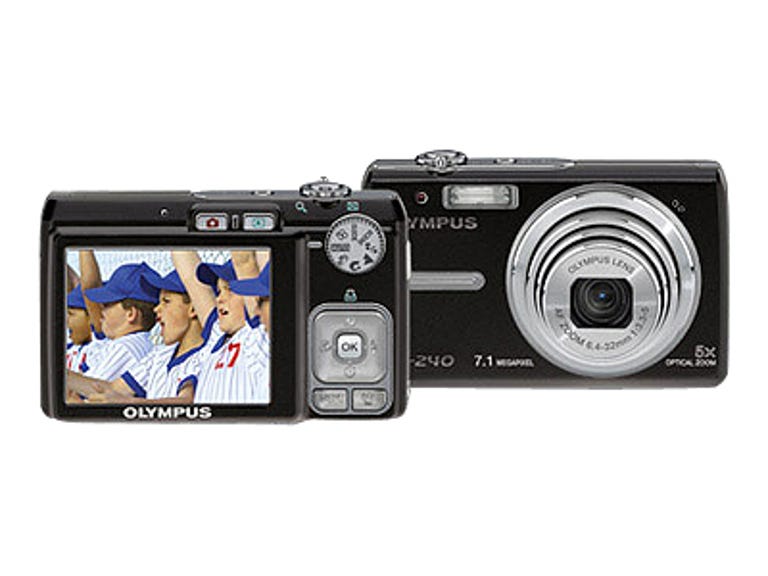The attractive, compact FE-240 measures 0.8 inch thick and weighs less than five ounces. Its small metal body fits comfortably in most pockets. Despite its small size, the camera's various controls are easy to manipulate, with buttons large enough for big thumbs to use.
The Good
The Bad
The Bottom Line
The FE-240's most notable feature is its lens. The camera's 38mm-to-190mm-equivalent lens offers a 5x magnification factor over the other FE-cameras' 3x lenses. Besides the increased zoom, the FE-240 sports fairly mundane features, such as a 7-megapixel sensor and a 2.5-inch LCD screen.
Like all Olympus FE-series cameras, the FE-240 is almost completely devoid of manual settings. Besides flash and macro shooting, preset scene modes, and exposure compensation, users can't make any image adjustments. White balance, ISO sensitivity, and other factors are completely automated by the camera, giving a very literal sense to the phrase "point-and-shoot." This isn't necessarily a bad thing; automation can be beneficial as long as the images look good in the end.
The FE-240's performance ranged from mediocre to terrible. After a 2.6-second start-up time, we could only fire off a shot every 5.1 seconds; that painful wait increased to 5.7 seconds with the onboard flash enabled. While 5 seconds is indeed far too long to wait between shots, it's not too surprising; the previous-generation FE-200 had shot-to-shot times of more than 7 seconds. The shutter wasn't nearly as responsive as it should have been, lagging 0.8 second on our high-contrast target and 1.9 seconds in low-contrast conditions. Like almost all Olympus FE-series cameras, the FE-240 doesn't have any burst mode.
Though its performance was disappointing, the FE-240's images were actually quite nice. Colors were accurate and neutral--even indoors, a tricky thing to accomplish with a camera's automatic white balance. Fine details came through clearly, and we saw very little lens distortion. Because of its fully automated operation, we couldn't perform our full regimen of noise tests, but given adequate lighting, photos had very little grain or fuzz. Just be careful when shooting in low light; the camera automatically ramps up the ISO sensitivity, generating lots of noise.
Despite the Olympus FE-240's sluggish performance and almost complete lack of manual settings, it's still a pretty good camera for new users. If you simply want to take decent photos and don't want to fiddle around with a lot of menus and buttons, it's an acceptable choice. Its price may seem a bit high for such a simple camera, but its photos look good, it's easy to use, and it's small enough to take almost anywhere.
(Shorter bars indicate better performance)
| Typical shot-to-shot time | Time to first shot | Shutter lag (typical) |

